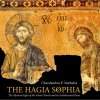Bazelli studied at Famu Film School in Prague. Impressed with one of Bazelli’s student films, director Abel Ferrara hired Bazelli to shoot China Girl in New York City. He subsequently filmed King of New York and Body Snatchers with Ferrara as well.
Bazelli received an Independent Spirit Awards in 1990 for his work on King of New York. He was honored for Best Cinematography in both 1996 and 1998 at the American Independent Commercial Producers (AICP), one of the few cinematographers to have received this honor twice. Bazelli also received a Gold Clio for Best Cinematography in 1998, and the film Kalifornia was awarded Best Cinematography at the Montreal Film Festival.





